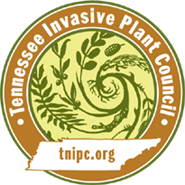Lysimachia nummularia L.
Creeping Jenny, Moneywort| Category |
|---|
| Forb/Herb |
|
Similar Species May be confused with the following native and/or non-native species. Landscape Alternatives lists native horticultural substitutes |
Groundcovers |
|---|

Description
Height
Creeping Jenny grows to 2-4 inches (5-10 cm) tall.Stem
Numerous simple stems are branched, jointed, and channeled to each side, or square.Leaves
The plant features rounded, slightly ruffled, yellow leaves 0.75 inch (1.9 cm) in diameter.Flowers
Profuse, cup-shaped, bright yellow flowers 0.75 inch (1.9 cm) across appear in June-July.Fruit
Fruit is rarely produced.Images
Photo: Richard Old, XID Services, Inc., Bugwood.orgMore images of Lysimachia nummularia
Life History
Creeping Jenny is a herbaceous perennial and member of the Primulaceae. In North America, it is not known to produce viable seeds spreads only vegetatively. It expands locally by way of its creeping stems, forming large colonies. These colonies can be found in isolated places, indicating that the plant also has a mechanism to disperse vegetatively over longer distances. A cultivated plant, Creeping Jenny can withstand damper soils than many other types of ground covers and can tolerate limited foot traffic.Veronica officinalis L. (Common gypsyweed), Glechoma hederaceae L. (Gill-over-the-ground), and Mitchella repens L. (Partridgeberry). All three of these herbaceous plants are common and have a creeping habit that, when not in flower, could lead to confusion.
Habitat
Creeping Jenny (also Moneywort) can be commonly found in damp places, such as marshy tracts bordering a river or lake where there is some shade and shelter from trees. It is also characteristic of moist woodlands, carpeting the banks of ditches and banks where natural glades or artificial rides allow daylight to enter unhindered.Origin and Distribution
Lysimachia nummularia is native to Europe and southwest Asia. It is unclear exactly when Creeping Jenny arrived in New England. Records from several locations in Massachusetts and the vicinity of New York City demonstrate that it was present at least as early as the 1870s. By the end of the nineteenth century there are many records of Creeping Jenny from around New England and it was already recognized as a potentially troublesome weed in some locations. By 1902, Williams' List of New England Plants records its presence in all states of New England. Gray's Manual of Botany, eighth edition states that Creeping Jenny had "escaped from gardens into damp ground in some places." It seems clear that Creeping Jenny was introduced for horticultural purposes; to what extent it might also have been accidentally introduced is unclear. Other States Where Invasive: CT, TN, MA. Federal or State Listed as Noxious Weed, Prohibited, Invasive or Banned: CT, MA.Sources
Fermanian, T. W., R. Randell, M. C. Shurtleff. 1987. Controlling turfgrass pests. Prentice-Hall, Inc., Englewood Cliffs, NJ. 278 pp.Fernald, M.L. 1950. Gray's Manual of Botany 8th ed. American Book Co., Boston.
